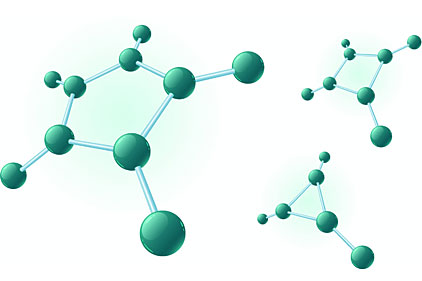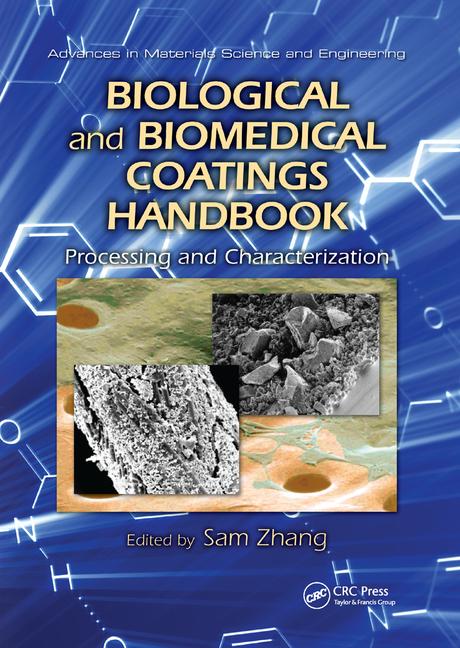Lubricious Medical Coatings Resist Particle Shedding During Use

Bayer MaterialScience LLC announces new
measurements that illustrate the durability of its Baymedix™ CL 100 lubricious
coating technology. Catheters with Baymedix CL 100 coatings, subjected to
demanding simulated-use tests, released far fewer wear particles than the
levels defined by the United States Pharmacopeia (USP) 788
standard.
Medical devices used inside the body shed wear particles during use – a phenomenon known as particulation. To reduce risk to patients, manufacturers seek to minimize the release of these particles. Hydrophilic lubricious coatings, used on devices like cardiovascular catheters, are particularly susceptible to particulation: the water they absorb makes them slippery when wet and easier for physicians to use, but it also makes them weaker. The stress of being inserted into narrow, tortuous blood vessels can break particles off the surface of a coated catheter.
The unique technology behind the Baymedix CL 100 lubricious coating product gives it an advantage in particulation resistance. Because the polymer coating is grown directly from a material surface, it is extensively bonded to the substrate through strong, covalent linkages. This bonding, along with the polymer entanglement that strengthens the coating itself, helps create an especially durable coating resistant to particle generation.
To quantify particulation, device engineers often use the USP standard 788, “Particulate Matter in Injections.” The data is sometimes used to support manufacturers’ applications to the U.S. Food and Drug Administration (FDA) to market certain medical devices.
In the simulated-use test performed on a Baymedix CL 100-coated catheter, the coating performance far exceeded the established standards. The number of generated particles greater than 10 microns in diameter was 59 percent below the limit defined by USP 788, and the number of particles greater than 25 microns was 78 percent below the limit.
The key to meaningful particulation testing is generating the particles using an appropriate test. Jeffrey Motley, R&D Manager for the Bayer MaterialScience Medical Coatings Development Centre in the United Kingdom, explains, “FDA guidelines state that the generation of particulates should be performed to as closely as possible resemble the actual use of the device.” Bayer used a coronary vascular model relevant to many of its customers’ devices.
Notably, Bayer was able to achieve its results with the demanding method of repeated insertion and removal of the device through a highly tortuous glass path. Said Motley, “We believe it represents a worst-case scenario in terms of usage.”
Paul Nowatzki, Business Development Manager for Bayer MaterialScience LLC, offered some perspective. “These results support the conviction we have had for a long time – that Baymedix CL 100 coatings offer superior durability and particulation resistance.”
Bayer MaterialScience has a team of professionals exclusively dedicated to the development and commercialization of its Baymedix portfolio of materials for medical devices, which includes drug-eluting coatings and materials for wound care applications.
For more information about Bayer MaterialScience LLC's coatings, adhesives or specialties, call 412-777-3983, email medicalinfo@bayer.com or visit www.bayermaterialsciencenafta.com.
Medical devices used inside the body shed wear particles during use – a phenomenon known as particulation. To reduce risk to patients, manufacturers seek to minimize the release of these particles. Hydrophilic lubricious coatings, used on devices like cardiovascular catheters, are particularly susceptible to particulation: the water they absorb makes them slippery when wet and easier for physicians to use, but it also makes them weaker. The stress of being inserted into narrow, tortuous blood vessels can break particles off the surface of a coated catheter.
The unique technology behind the Baymedix CL 100 lubricious coating product gives it an advantage in particulation resistance. Because the polymer coating is grown directly from a material surface, it is extensively bonded to the substrate through strong, covalent linkages. This bonding, along with the polymer entanglement that strengthens the coating itself, helps create an especially durable coating resistant to particle generation.
To quantify particulation, device engineers often use the USP standard 788, “Particulate Matter in Injections.” The data is sometimes used to support manufacturers’ applications to the U.S. Food and Drug Administration (FDA) to market certain medical devices.
In the simulated-use test performed on a Baymedix CL 100-coated catheter, the coating performance far exceeded the established standards. The number of generated particles greater than 10 microns in diameter was 59 percent below the limit defined by USP 788, and the number of particles greater than 25 microns was 78 percent below the limit.
The key to meaningful particulation testing is generating the particles using an appropriate test. Jeffrey Motley, R&D Manager for the Bayer MaterialScience Medical Coatings Development Centre in the United Kingdom, explains, “FDA guidelines state that the generation of particulates should be performed to as closely as possible resemble the actual use of the device.” Bayer used a coronary vascular model relevant to many of its customers’ devices.
Notably, Bayer was able to achieve its results with the demanding method of repeated insertion and removal of the device through a highly tortuous glass path. Said Motley, “We believe it represents a worst-case scenario in terms of usage.”
Paul Nowatzki, Business Development Manager for Bayer MaterialScience LLC, offered some perspective. “These results support the conviction we have had for a long time – that Baymedix CL 100 coatings offer superior durability and particulation resistance.”
Bayer MaterialScience has a team of professionals exclusively dedicated to the development and commercialization of its Baymedix portfolio of materials for medical devices, which includes drug-eluting coatings and materials for wound care applications.
For more information about Bayer MaterialScience LLC's coatings, adhesives or specialties, call 412-777-3983, email medicalinfo@bayer.com or visit www.bayermaterialsciencenafta.com.
Looking for a reprint of this article?
From high-res PDFs to custom plaques, order your copy today!








